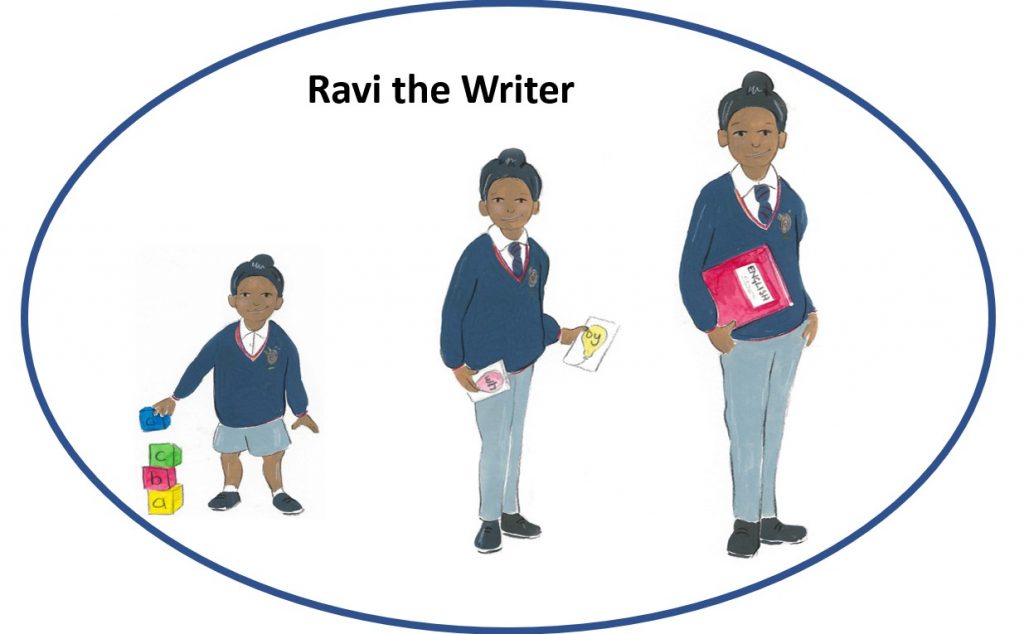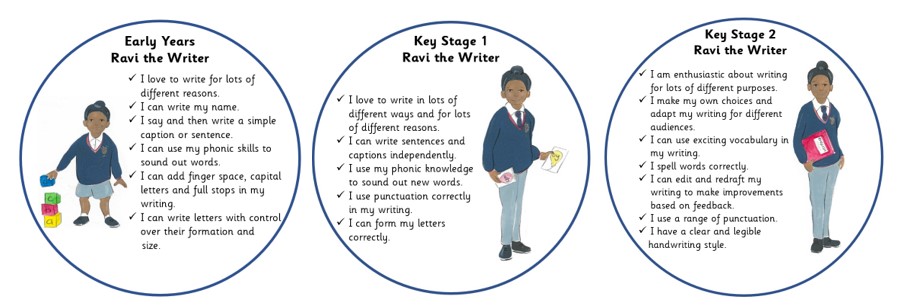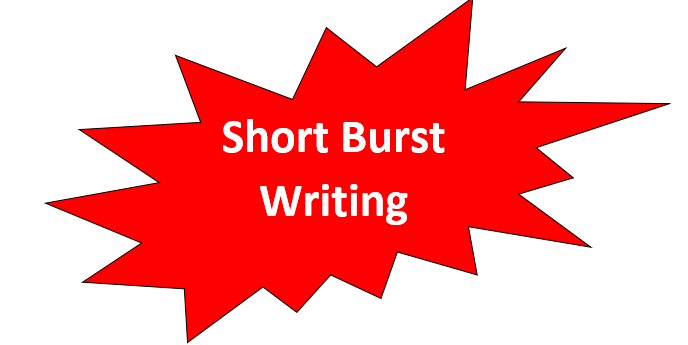

Intent: This is what we want for your child.
At Barley Fields Primary we are especially proud of our bespoke writing curriculum and the way it supports our children in their progressive journey to become creative and imaginative writers, with a high level foundational knowledge and technical skill. Our writing curriculum is delivered through immersive experiences, designed to create excitement and motivation with audience and purpose at its core. Writing at Barley Fields isn’t designed to stay on a page and we seek opportunities to bring it to life. Our children can be: story-tellers, poets, journalists and even villains! We aim to ensure our children leave Barley Fields as enthusiastic, confident and competent writers. We promote the fact that writing is a process, and to produce an effective written piece, children will have opportunities to plan, edit, re-draft and publish their learning. This is in line with our culture of growth mind-set.
We provide a high-quality writing curriculum so that all children:
- Acquire the spoken language they need to effectively express themselves through their writing
- Are physically ready to write fluently and legibly for each stage of their writing journey
- Use their reading and knowledge of texts to compose and structure their writing in a variety of ways, for a variety of audiences and purposes
- Have the technical skills of grammar, punctuation and spelling
We aim for our writing curriculum to be current and research informed. As such, it is regularly adapted to meet the needs of all learners and reviewed in response to best practice. We have worked with guidance from the EEF and the National College to understand and apply adaptive teaching in the classroom which underpins all our teaching practice and pedagogy.
Our curriculum characters have been designed to represent the curriculum end points as children progress through school. Our children are regularly exposed to the core skills and knowledge needed to develop as a writer with the use of the school curriculum character – Ravi the Writer.

Implementation: This is what it will look like in the classroom
Writing is taught regularly in specific, meaningful and effective contexts. Our curriculum covers a range of text types that consider four main purposes for writing: writing to entertain, writing to inform, writing to persuade and writing to discuss.
We do this by:
- Engaging children in the writing process through carefully selected writing hooks
- Immersing the children in reading or spoken opportunities linked to the purpose and audience
- Reading examples to ‘magpie’ language and features to develop toolkits and working wires
- Planning, modelling and sharing writing to demonstrate the thought processes and actions of a competent writer
- Providing opportunities for children to write with increasing independence in a variety of ways
- Encouraging the children to edit and re-draft so that their writing achieves the purpose, appeals to the audience and is technically accurate
- Inspiring the children to bring their writing to life through publishing or performing and using technology when appropriate
We primarily adopt principles from three pedagogical approaches to the teaching of writing within our curriculum;
- Talk for Writing
- Read, Write Perform/publish
- Short Burst Writing



The children in Nursery to Year 6 follow detailed medium-term schemes of learning covering the writing curriculum content. These are underpinned by an understanding of effective teaching pedagogy for quality first teaching in writing and ensure progression in the development of skills such as grammar, spelling, punctuation and handwriting.
Impact: This is what it will mean for children
The impact of our writing curriculum is that children are able to compose and create writing for a range of purposes and audiences. Children will understand that the ability to communicate through writing is a valuable skill that they will utilise in many areas of their daily life both now and in the future. Children will have a positive view of writing due to learning experiences in a classroom where growth mind-set is at the heart of learning.
Our writing curriculum and our teaching and learning pedagogy leads to children who:
- Are inspired, motivated and enthusiastic about the writing process
- Use spoken language to orally compose their work and check grammatical conventions and sentence structure
- Draw on what they have read as models for their own writing composition
- Use ambitious language and vocabulary in their writing
- Write with independence and apply the technical skills of grammar, punctuation and spelling
- Creatively compose a variety of texts, making informed choices about content, structure and organisation
- Are resilient writers who edit and re-draft to compose effective written pieces
- Are proficient writers and achieve very well
We are proud of our children’s development of skills in writing which in turn lead to excellent attainment outcomes. We continually observe and formatively assess children against age-related writing objectives and use this information to plan the next steps in their learning and to challenge and consolidate their skills. By the end of each key stage, pupils are expected to know, apply and understand the skills and techniques specified in the relevant curriculum plans.
For more details please see the documents below.
